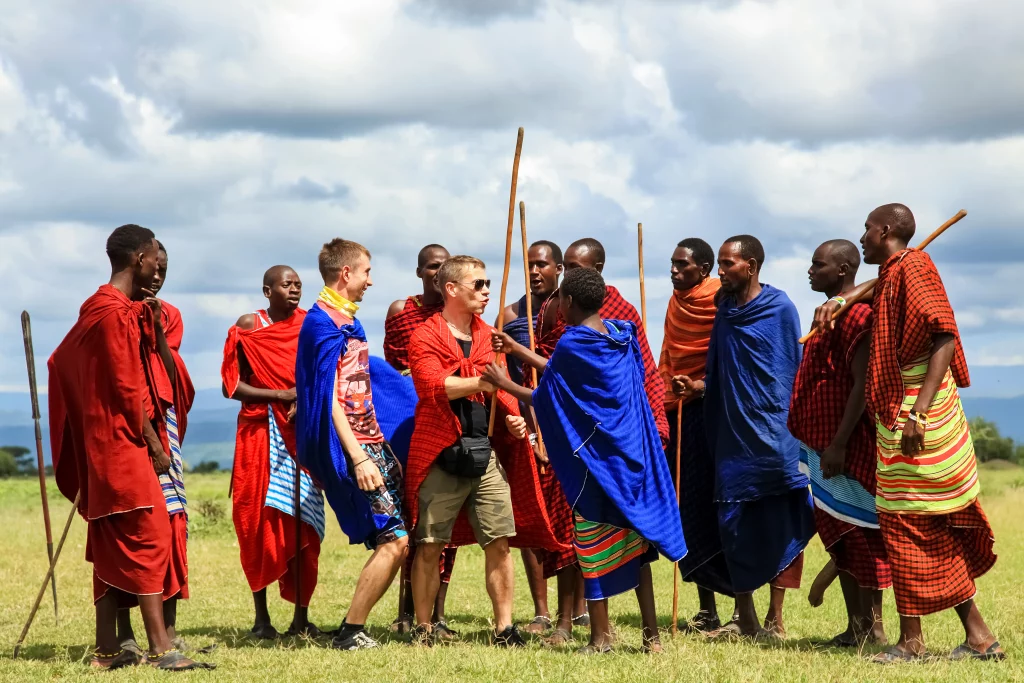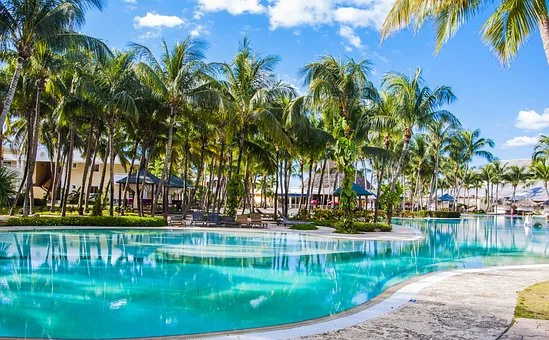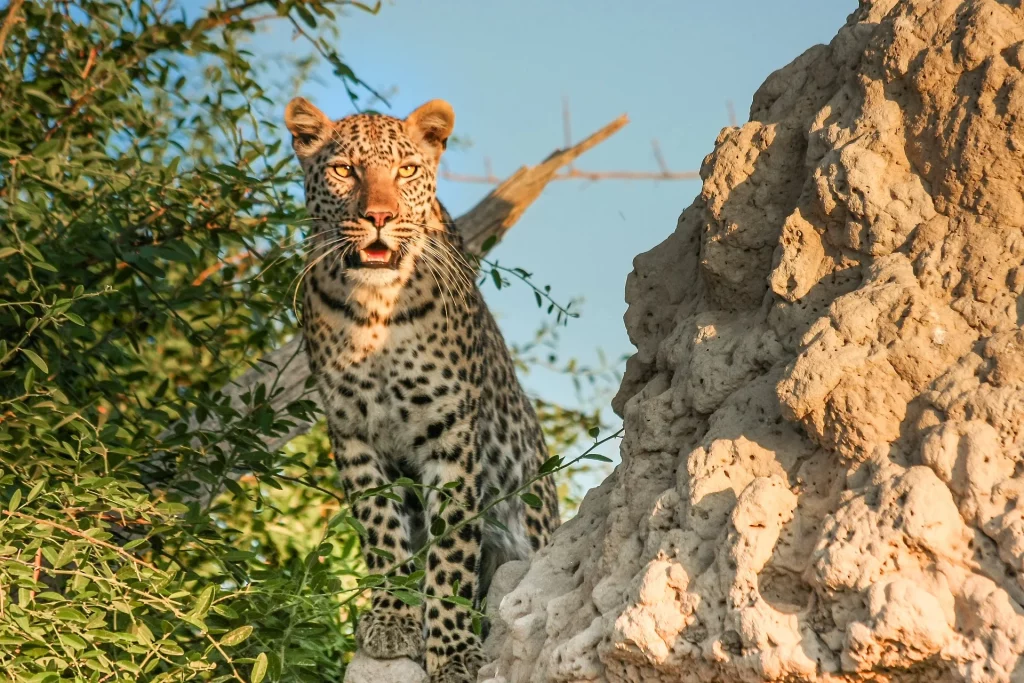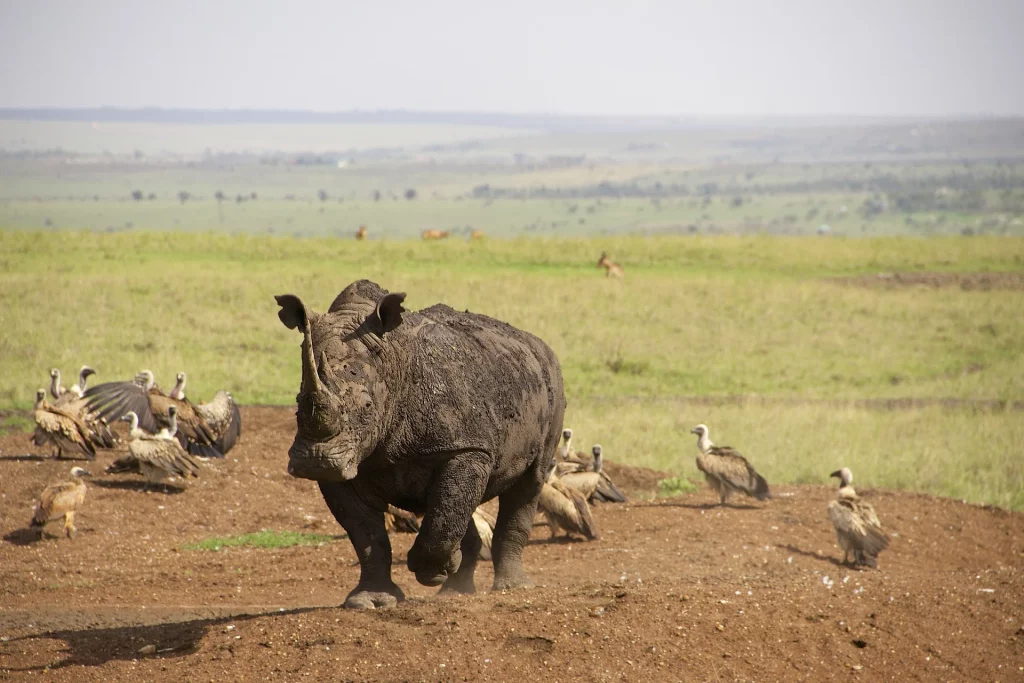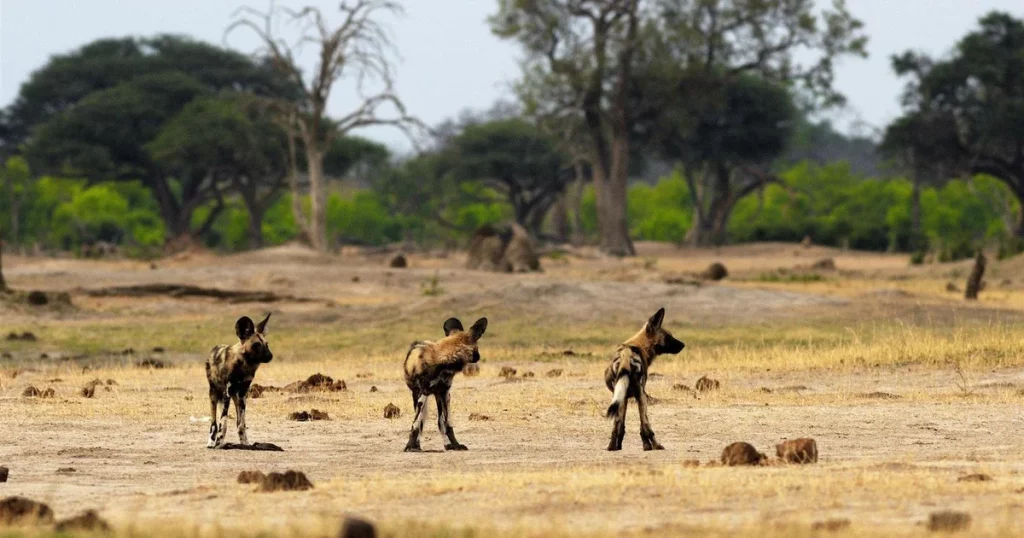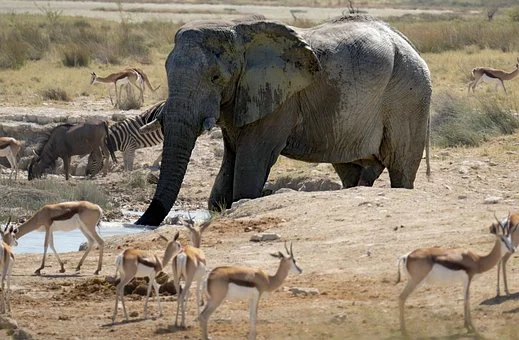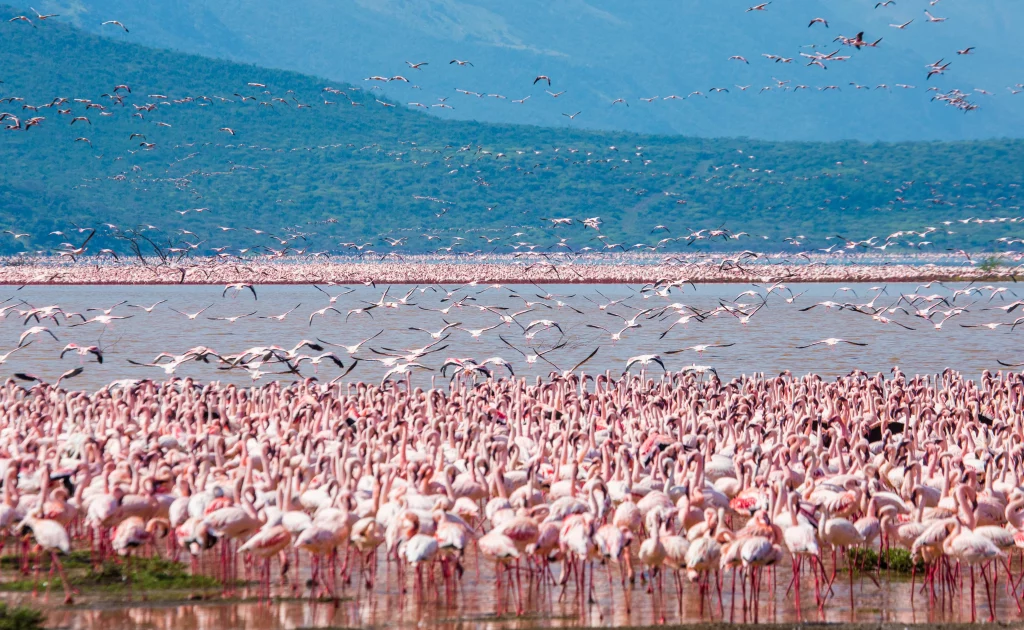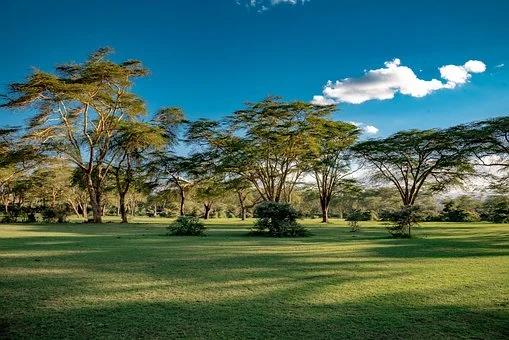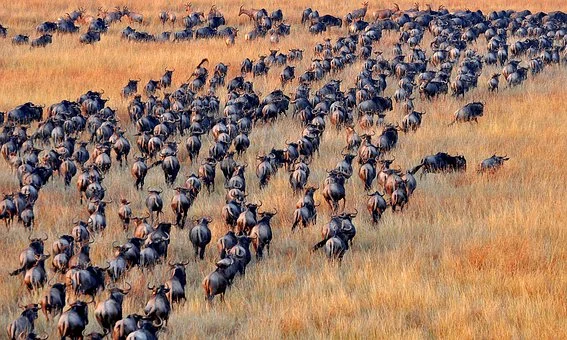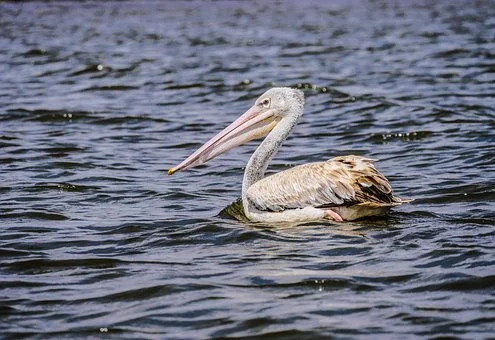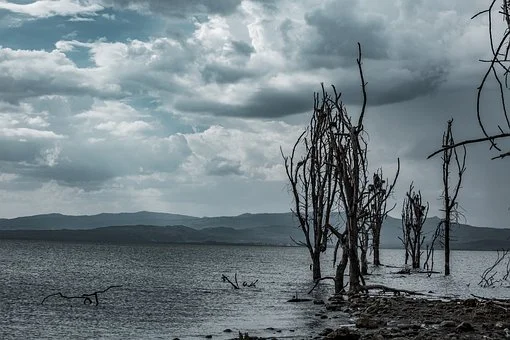Uncover the Magic Behind the Great Migration of Africa

James, our company CEO, calls the Great Migration the best, most extraordinary thing he’s ever experienced. A good number of us can vouch for him, the Great Wildebeest Migration is really one to surpass even the most eager of expectations.
In this article, we tell you about this one-of-a-kind event from
where, when, why, and how it happens.
But First…
Here’s Why You Need to Book Your Great Migration Safari With Us

Very few things in life are as deeply engrossing and well-thought-out as our Great Migration safaris. And no, this is not by pure chance or coincidence or luck. It is years upon years spent arranging, re-arranging, facilitating, and consulting local, regional, and expert sources to come up with the perfect recipe for the perfect migration safari.
In a span of two decades, we’ve managed to;
- Built a long-lasting relationship with 40+ reputable lodges, hotels, and resorts in the Masai Mara.
- Create an exceptional team of passionate safari guides, knowledgeable drivers, and experienced consultants
- Develop great relationships with local communities around the parks and conservation areas allowing us to provide unique and exclusive safari experiences
Call or WhatsApp us at +254-704-532-105 or send us an email at safarioffers@kenyasafariholidays.uk, safarioffers@ajkenyasafaris.com, or james@ajkenyasafaris.com to book your Great Wildebeest Migration Safari today!
Need More Convincing? Browse Through Some of Our Most Booked Masai Mara Safaris
What is the Great Wildebeest Migration?

The Great Migration is a man of many titles. For one, it is the single largest wildlife migration on earth. For another, it is one of the seven wonders of the world. It is also the most sought-after safari experience in Africa.
If you’re looking for a more fluff-free answer then the Great Migration can be described as the annual seasonal movement of millions of wildebeest, zebras, and gazelles from the Serengeti National Park in Tanzania to the Masai Mara National Reserve in Kenya.
What Animals Are in the Great Migration?
The Great Wildebeest Migration is the single largest animal migration on the planet. The aforementioned sees almost 2 million wildebeest, zebra, and gazelles follow an age-old migration route in a quest for better grazing land and fresher water.
Other animals present during the migration include the lion, wild dog, crocodile, hippo, hyena, leopard, andmobil cheetah.
Why Does the Great Migration Happen?
Although it’s generally believed that the Great Migration is dictated primarily by the rains, scientific proof now shows that the search is also driven by the wildlife’s incessant need for fresh grazing land, better quality water, and nutritious grasses.
Where does the Great Migration Happen?
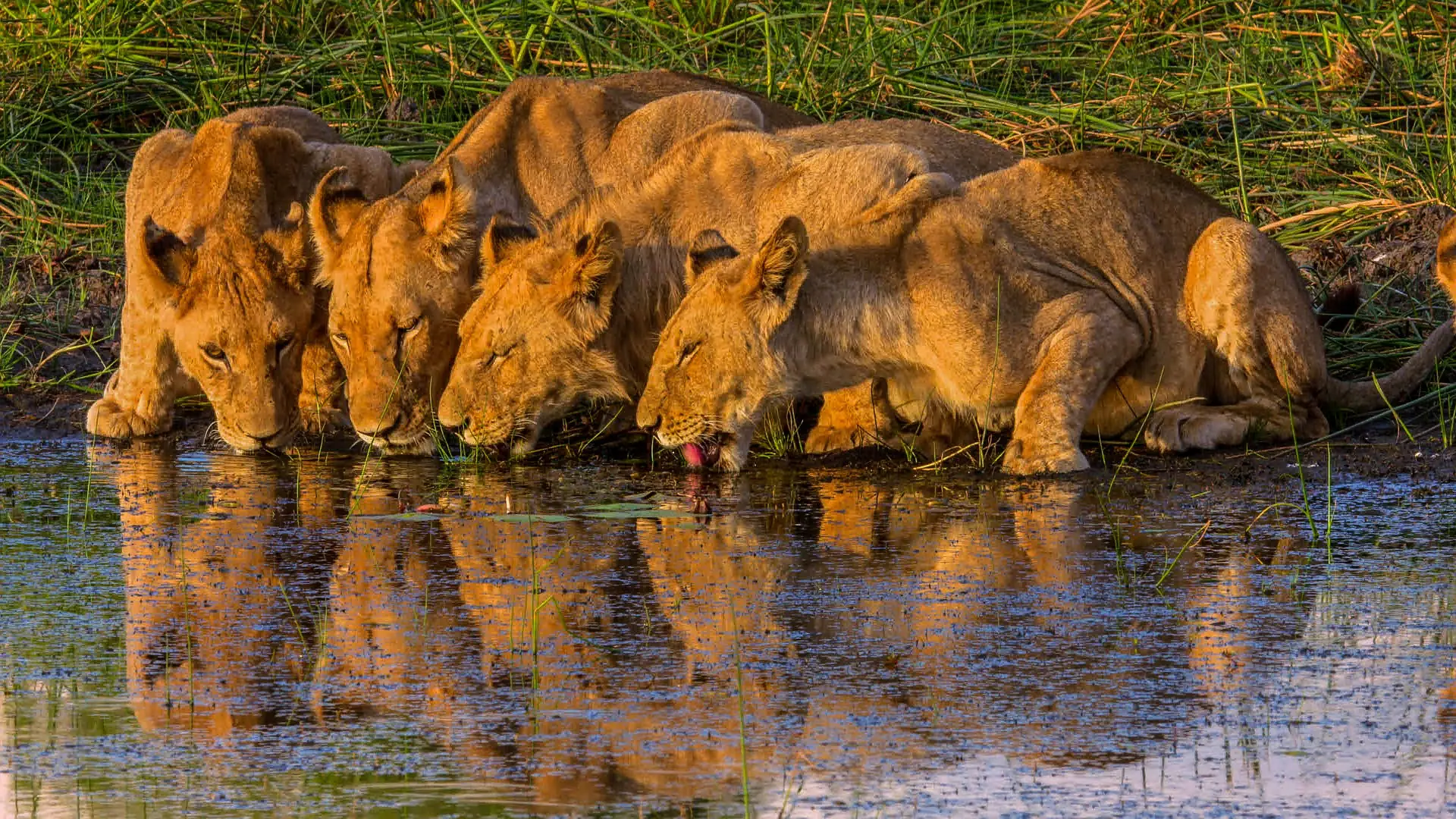
The Great Migration takes place between the Serengeti National Park in Tanzania and the Masai Mara National Reserve in Kenya. Now this is no little walk- no ma’am!
Each individual animal actually covers a distance of up to 40km per day. Keep in mind that the migration goes on for months so by the end of it all, each animal will have covered almost 2,000 km per year.
Where and When Does the Wildebeest Migration Happen: a Month by Month Analysis
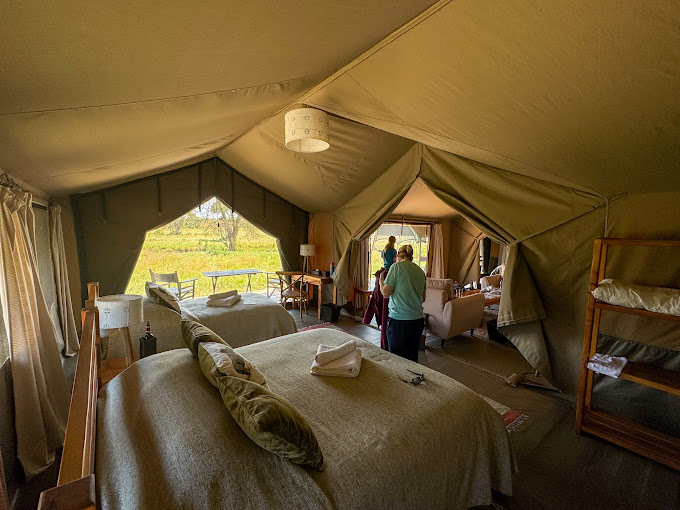
Contrary to popular belief, the Mara-Serengeti Migration is not a one-off event. Instead, it occurs all year round with animals crossing back and forth, from the Serengeti plains to the Masai Mara plains. Here’s a month-by-month analysis of the annual migration.
January
The wildebeest herds are in the Serengeti National Park at this time of the year. As the end of January approaches, the animals begin heading south toward Lake Ndutu in the Ngorongoro Conservation Area.
February to March (Calving Season)
Like in the human world, February is also the month of love in the Serengeti. Only this time it is commemorated by something even more magical and special- giving life!
Over 8,000 wildebeests are born daily during the calving season- a joyous occasion for some wildebeest moms and an excruciatingly painful one for others. You see, the presence of small, fragile calves means even more big cats lurking in the shadows. It is a spectacle to watch- one as tear-jerking as it is fascinating.
April (Mating Season)
April officially marks the beginning of the long rainy season which continues until May. The animals who are now in Southern Serengeti begin moving northwest towards the Simba and Moru Kopjes.
April is also when the breeding season happens. It’s always amazing to watch testosterone-filled males compete for babes.
May
May means go time in the Serengeti. In columns as long as 40 km, the wildebeest begin their march into Central Serengeti. The young fragile calves that were born a few weeks ago? Yeah, they’re walking now! And though they’re still at risk, they often manage to survive the trip.
June (Grumeti River Crossings)
June is preparation time. The wildebeest- now in Central Serengeti- are mentally and physically readying themselves for the first river crossing- the Grumeti River crossing. Sometime in late June, the animals begin to split up- some remain in central Serengeti while others begin crossing the Grumeti River.
July
The migrating animals are now in the Grumeti Region and in the northern plains of the Serengeti. They continue their north-bound march and soon enough the most dramatic river crossing ever known to mankind will begin.
We call it the Mara River Crossing. A spectacle that is as captivating as it is heart-wrenching. One that claims the lives of nearly 250,000 wildebeests every year. Hungry crocodiles and hippos? Those are the real villains of this story.
August
August means bloodshed and new territories. The wildebeest migration is in full swing and if you were wondering when’s the best time to catch the best of it, this is it. The Mara River Crossing moves the migrating animals from northern Serengeti into Masai Mara.
September
A good number of wildebeest still remain in Northern Serengeti but the majority have crossed over into the Masai Mara and are now scattered all over its grasslands.
October
Though the migration has slowed down a ton, wildlife is still trickling into the Mara in thousands. The Mara, at this time, is a beehive of activity. On one end is a herd or ten of grazing wildebeest, on the other is a pride of viciously stalking lions, and in the Mara River, a bask of very happy, well-fed crocodiles.
November
The short rains begin in early November and the wildebeests must now trade the diminished short grass plains of the Mara for the lush, juicy grasslands of Tanzania’s Serengeti.
December
The promise of greener pastures, yet again, sees the migrating herds cross deep south into the northern and eastern sides of the Serengeti plains.
Best Time to Go for a Great Migration Safari
Well, it really comes down to what you want to see. Here’s a table detailing what happens when and when.
Event | When It Happens | Where It Happens |
Calving season | February to March | Southern Serengeti (near the Ngorongoro Crater) |
Mating/ Breeding Season | April to May | Western Corridor and Central Serengeti |
Grumeti River Crossings | May to June | Central Serengeti |
Mara River Crossings | July to August | Northern Serengeti and Masai Mara |
Where to Stay for the Best Views of the Great Migration
Whether you’re catching the Great Wildebeest Migration from the Kenyan or Tanzanian side, we’ve got just the perfect safari camps for you.
Angama Mara- Kenya

Luxurious yet homely, Angama Mara sits on the edge of the Great Rift Valley right above the Mara Triangle. All its 10 tented suites feature 36-foot wide floor-to-ceiling windows from where you can catch the Great Migration.
The lodge also features an expansive deck with 360-degree views of the Mara which is yet another amazing spot to catch the migration.
Kichwa Tembo Tented Camp- Kenya
The Kichwa Tembo Tented Camp is a remarkable safari lodge located in the heart of Masai Mara. One of its highlights is the unique Mara River lookout point from where you can witness thousands of wildebeest and zebra crossings during the Great Migration.
The Lodge also offers organized game drives and hot air balloon rides, both of which are great ways to spot the migrating animals.
Keekorok Lodge – Kenya
Situated on the direct path of the Great Migration, Keekorok Lodge is an unbeatable spot to catch the Great Migration. Its rooms are absolutely to die for, its services exemplary, and its amenities contemporary.
Mara River Lodge- Kenya
Known for offering one of the best overlooks of the Great Migration, the Mara River Lodge sits on the banks of the Mara River. There’s everything to love about this safari lodge, from its impeccable services to its tastefully designed rooms and contemporary amenities.
Serengeti Safari Camp- Tanzania
A mobile camp to rival all other mobile camps, the Serengeti Safari Camp exudes luxury and comfort. The camp is set up and taken down annually in whatever direction the wildebeest migration takes so rest assured of uninterrupted views of the Great Migration.
Lemala Ngorongoro Tented Camp- Tanzania
The Lemala Ngorongoro Tented Camp is a luxurious tented camp located on the outskirts of Ngorongoro Crater. Its nine spacious tents sit atop an escarpment from where you can catch the Great Migration in all its glory.
Singita Faru Faru Lodge- Tanzania
There honestly isn’t a better, more luxurious place to watch the Great Migration than Singita Faru Faru Lodge. Its eight suites are all elegantly designed with direct views of the Grumeti River where the first great migration river crossings happen.
The services? Timely and professional. The amenities? Modern and well-thought-out. The views? Simply breathtaking.
Frequently Asked Questions
Your most plaguing questions answered!
Kenya vs Tanzania: Which Country is Best for the Great Migration?
The Great Migration is a wonder to watch no matter where you watch it from. However, there are subtle differences between the two countries that could help you make a decision.
Firstly, Kenya’s infrastructure is more developed, meaning better roads, more accommodation options, and better security. The presence of more accommodation options also increases your chances of finding cheap accommodation.
Secondly, Masai Mara National Park is much smaller in comparison to Serengeti. This means you’ll have a much easier time spotting the wildlife since it’s not that scattered.
How Much is a Migration Safari in Kenya?
The cost of a migration safari in Kenya will depend on the type of accommodation you choose, the length of your stay, and any additional activities you choose to do.
This 3-day Masai Mara safari, for example, goes for only £798. It leans more on the shorter side and the accommodation provided is mid-range.
This one, on the other hand, is a little more expensive. The accommodation provided is luxurious and it is a day longer.
We also have this one (from £887) and this one (from £1111) and this one (from £1143).
Contact us today for more customized Great Wildebeest Migration packages.

